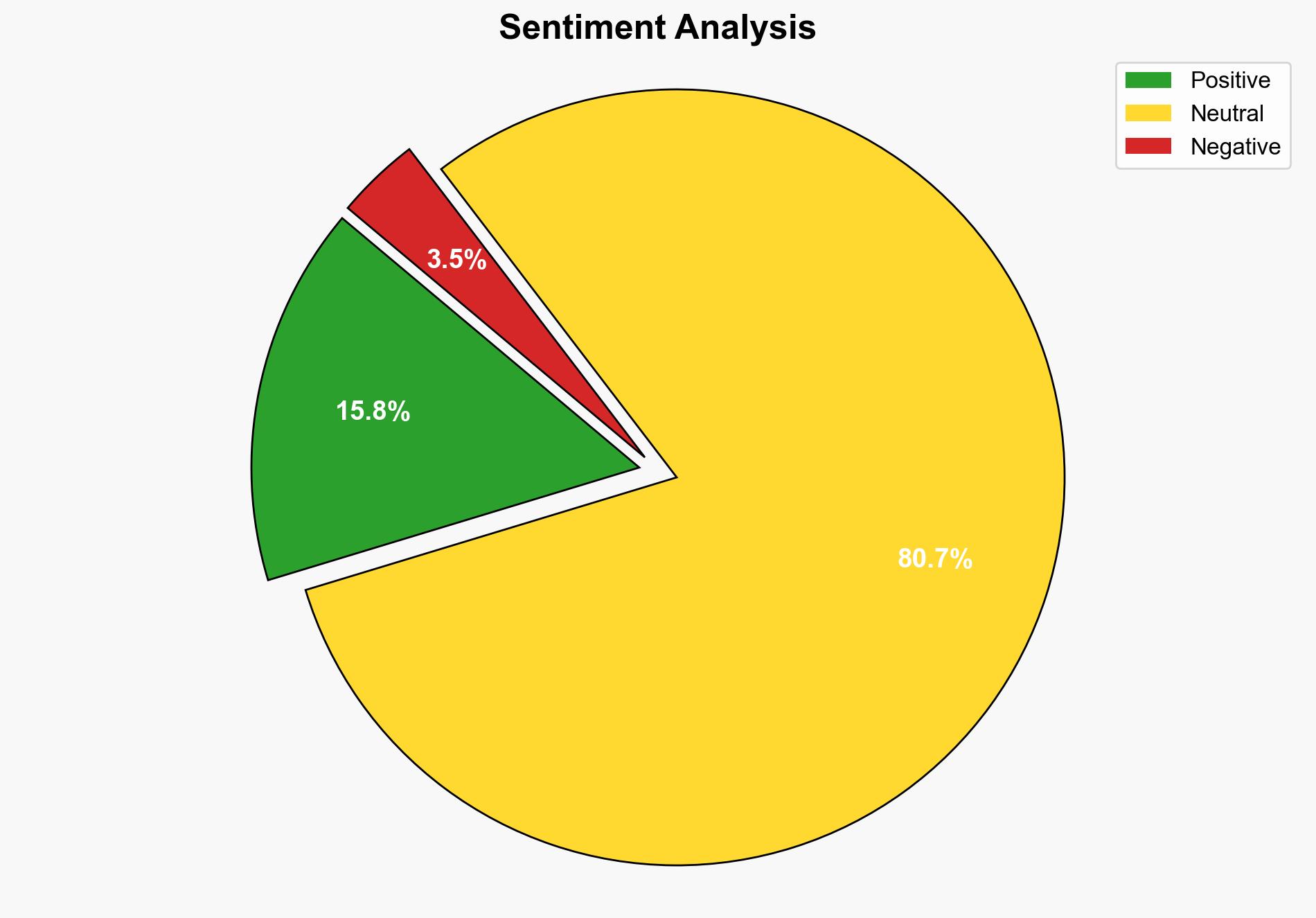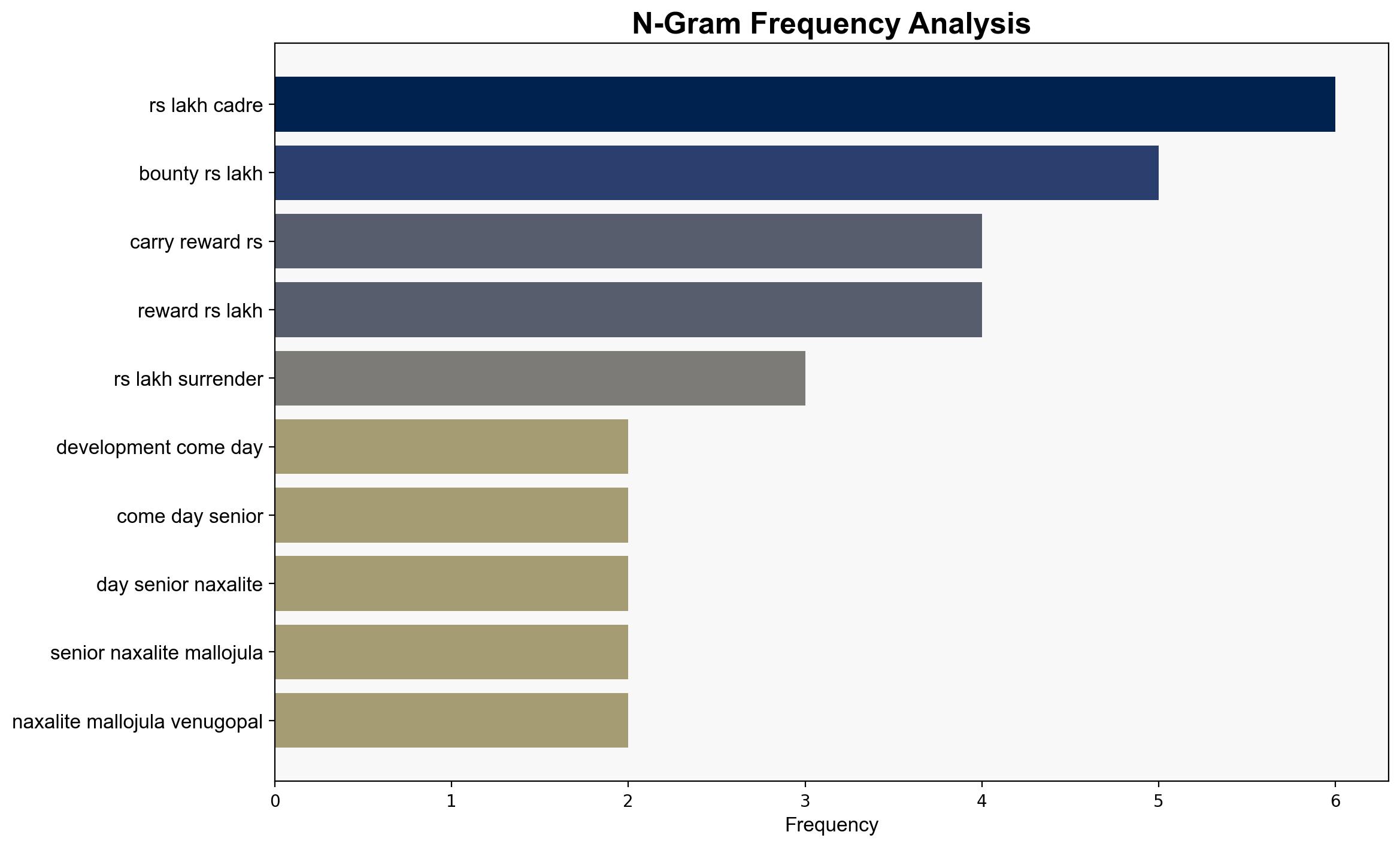27 Naxalites surrender in Chhattisgarh’s Sukma – The Times of India
Published on: 2025-10-15
Intelligence Report: 27 Naxalites Surrender in Chhattisgarh’s Sukma – The Times of India
1. BLUF (Bottom Line Up Front)
The surrender of 27 Naxalites in Chhattisgarh’s Sukma district suggests a potential weakening of the Naxalite movement in the region, likely due to effective government strategies and disillusionment within Naxalite ranks. The most supported hypothesis is that government policies and security measures are successfully undermining Naxalite influence. Confidence in this assessment is moderate, given the potential for strategic deception by Naxalite leaders. Recommended action includes reinforcing current policies and monitoring for any retaliatory actions by remaining Naxalite factions.
2. Competing Hypotheses
1. **Hypothesis A:** The surrender is a genuine indication of the weakening Naxalite influence due to effective government policies and security operations.
– **Supporting Evidence:** The surrenders coincide with government development schemes and rehabilitation policies. Disappointment with the Naxalite ideology is cited by the surrendering individuals.
2. **Hypothesis B:** The surrender is a strategic deception by the Naxalites to regroup and reorganize under less scrutiny.
– **Supporting Evidence:** Historical precedent of Naxalites using surrenders as a tactic to mislead security forces. The timing may be intended to lull security forces into a false sense of security.
Using ACH 2.0, Hypothesis A is better supported due to the alignment of multiple independent factors, such as government initiatives and public statements by the surrendering individuals. However, Hypothesis B cannot be entirely discounted due to the strategic nature of Naxalite operations.
3. Key Assumptions and Red Flags
– **Assumptions:**
– The government’s development schemes are genuinely reaching and impacting remote areas.
– Disillusionment among Naxalites is widespread and not isolated to a few individuals.
– **Red Flags:**
– Lack of independent verification of the motivations behind the surrenders.
– Potential for Naxalites to use surrenders as a tactical pause rather than a strategic defeat.
4. Implications and Strategic Risks
– **Implications:** A genuine weakening of Naxalite influence could lead to increased stability and development in the region, attracting more investment and improving local governance.
– **Strategic Risks:** If the surrenders are deceptive, security forces may face unexpected attacks, leading to potential loss of life and resources. Additionally, failure to capitalize on this momentum could allow Naxalites to regain strength.
5. Recommendations and Outlook
- Continue and expand development initiatives in remote areas to consolidate gains.
- Enhance intelligence operations to verify the authenticity of surrenders and monitor for regrouping activities.
- Scenario Projections:
– **Best Case:** Sustained surrenders lead to a significant reduction in Naxalite activities.
– **Worst Case:** Surrenders are a ruse, leading to a resurgence of violence.
– **Most Likely:** Continued pressure results in sporadic surrenders, with some Naxalite factions persisting.
6. Key Individuals and Entities
– Mallojula Venugopal Rao (alias Bhupathi)
– Oyam Lakhmu
– Madvi Bhima
– Sunita (alias Kawasi Somdi)
7. Thematic Tags
national security threats, counter-terrorism, regional focus, insurgency dynamics





